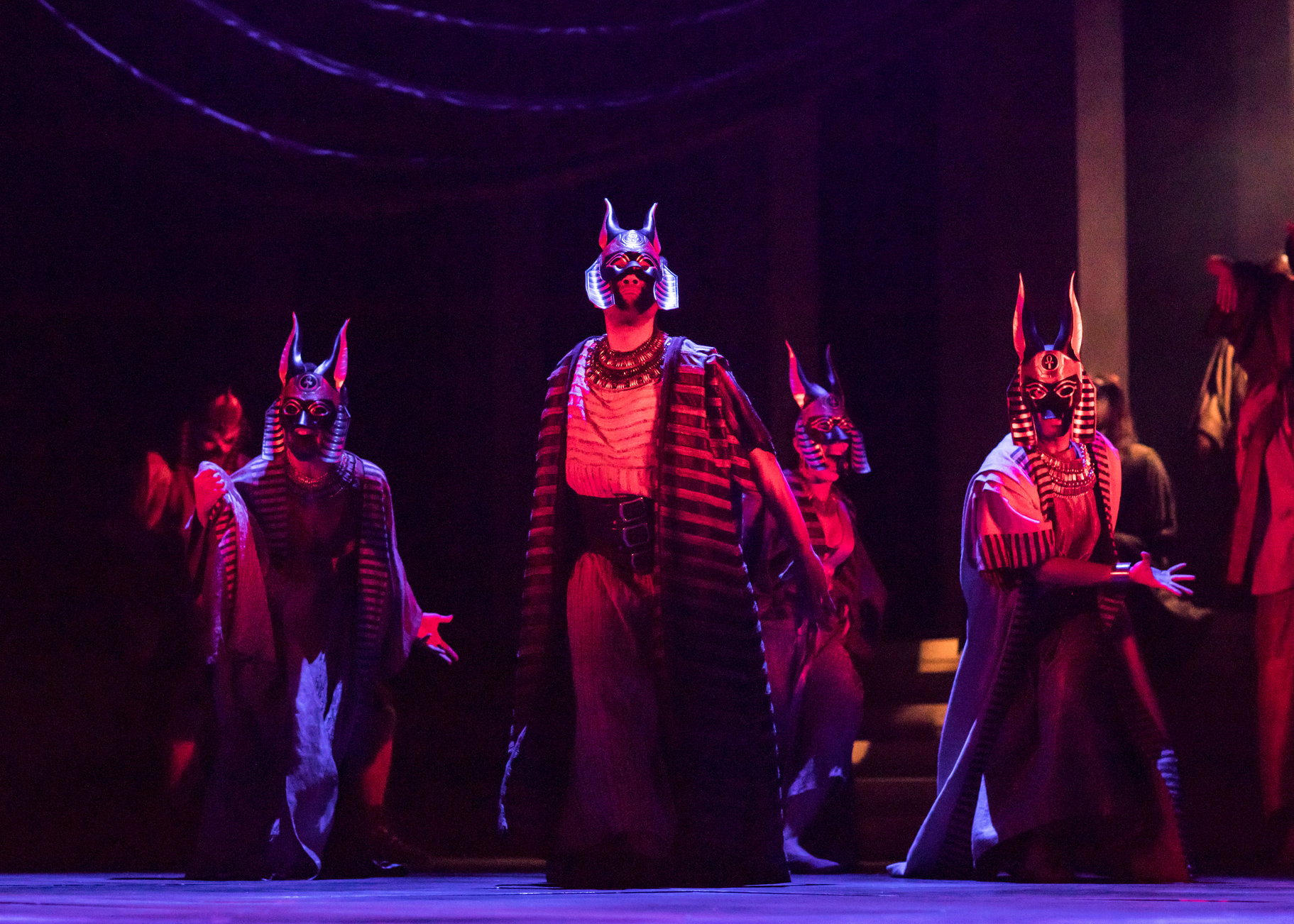Starring one of the most commanding female characters in Shakespeare‘s collection, Rose Crees reviews the RSC‘s recent take on the classic tale
The Royal Shakespeare Company’s adaptation of William Shakespeare’s Antony and Cleopatra follows the violent passions of Mark Antony, a member of the Roman triumvirate, and Cleopatra, queen of Egypt. Antony’s un-Roman actions see him lock horns with Octavius Caesar over his political alliances but, amongst broken promises and hateful gossip, his love for the enigmatic Cleopatra triumphs over political reason. Director Iqbal Khan returns after his triumphant production of Othello (2015) at the RSC and creates a stylistically dichotomous love story of Western empire and Eastern promise.
‘Director Iqbal Khan returns after his triumphant production of Othello (2015) at the RSC and creates a stylistically dichotomous love story of Western empire and Eastern promise.’
Cleopatra, played by Josette Simon, was gorgeously melodramatic in a performance that parodied her hedonistic power while retaining harrowing sincerity. Simon’s fantastic portrayal of the outspoken queen, who rules her empire with an acidic tongue and sharp wit, gave a performance that swelled with exuberance from her energetic physicality upon the stage to her enchanting expression of 400-year-old verse.
The parts of the play that did not involve Simon’s performance did drag – it seemed it was she who was the glue of the entertainment, magnificent between the mundane Roman scenes. While both Antony Byrne and Ben Allen gave impressive performances of Antony and Caesar respectively (Byrne adopted a stoic role, torn between political allegiance and emotion under the control of Allen’s juvenile and irrational Caesar) they lacked the multifaceted complexity of Simon who commandeered the attention of the show.
The divide between Western and Eastern empires was construed through the set-design and costume. The play’s Egypt was warm, gold and softly furnished which quickly turned to a grey, caustic and sterile Rome. A backdrop of clouds that changed in tumult depending on the mood of the scene, gave the audience the impression that they were watching a series of classical paintings in tragic succession.
Perhaps the most impressive of scenes was the intricately choreographed sea battle between Caesar and Cleopatra’s armies. The use of model ships clashing, alongside the physical movement of the actors fighting, perfectly enacted something almost unimaginable for the stage.
The RSC’s production was visually and dramatically potent, raising questions of femininity, power and politics. While it was easy to feel it’s hefty three hour running time, this is an attribute of the original script itself rather than the stimulating work of a strong cast and stylistic team.
Rose Crees
(Image courtesy of Helen Maybanks at the RSC)

